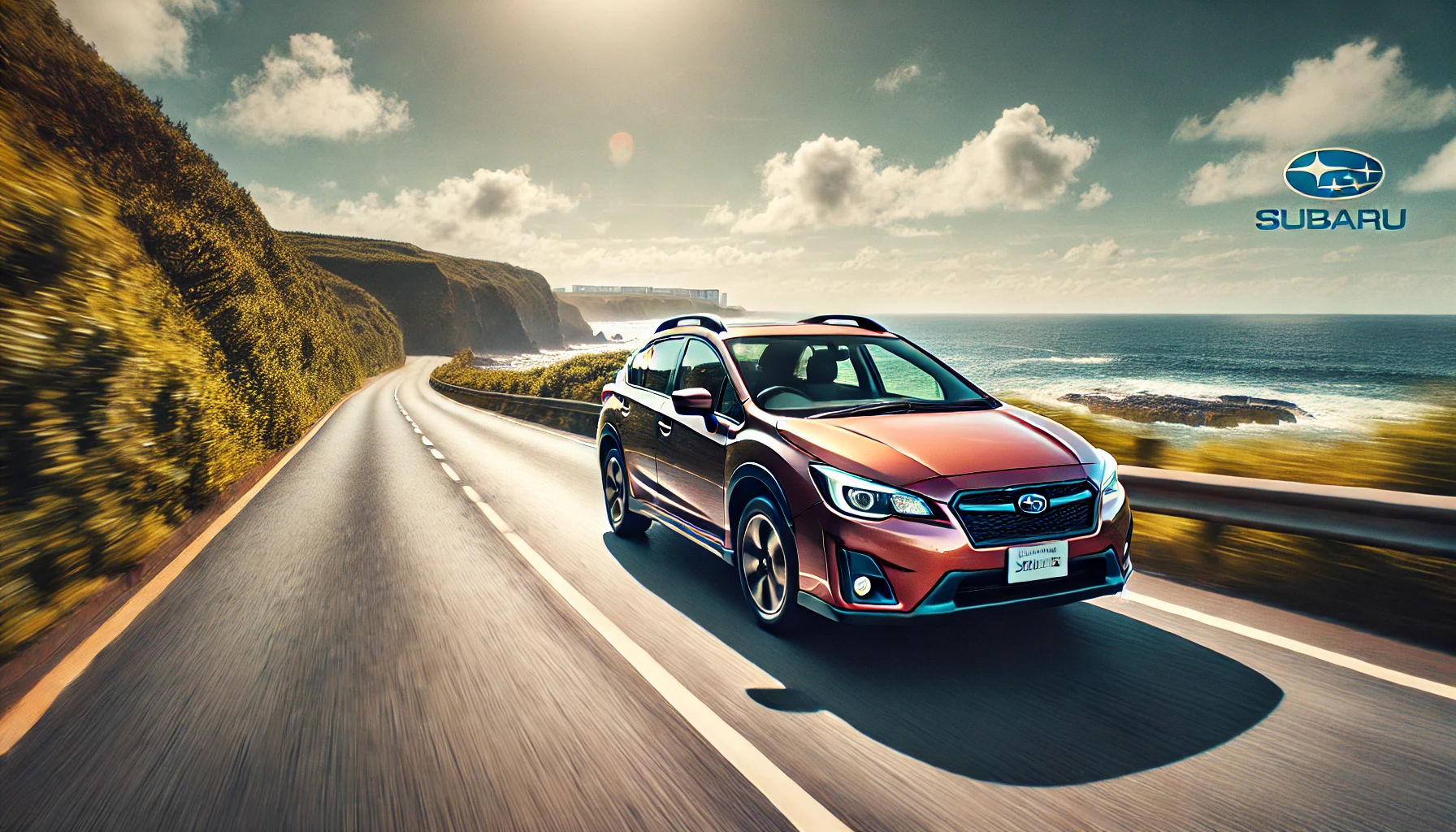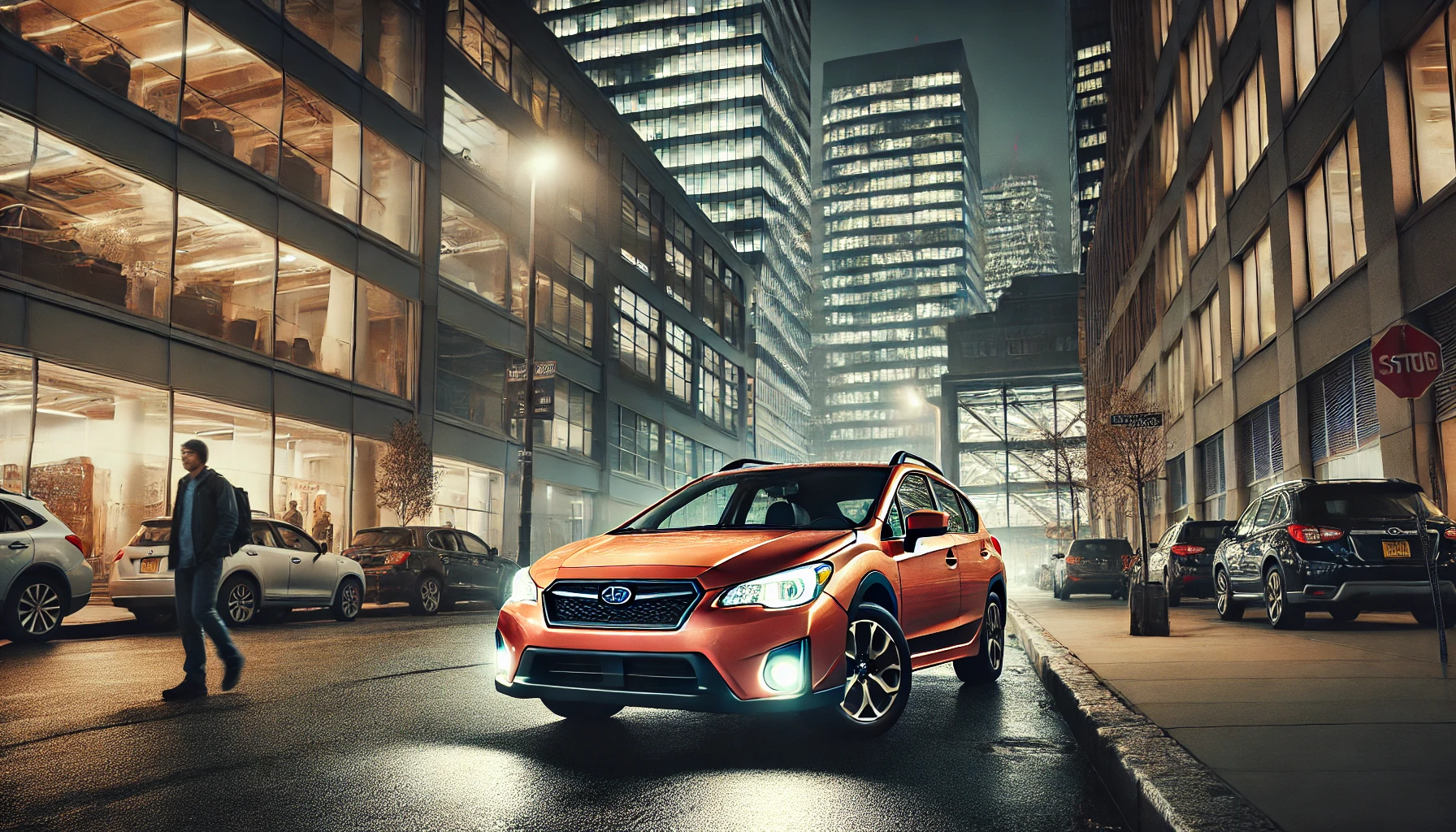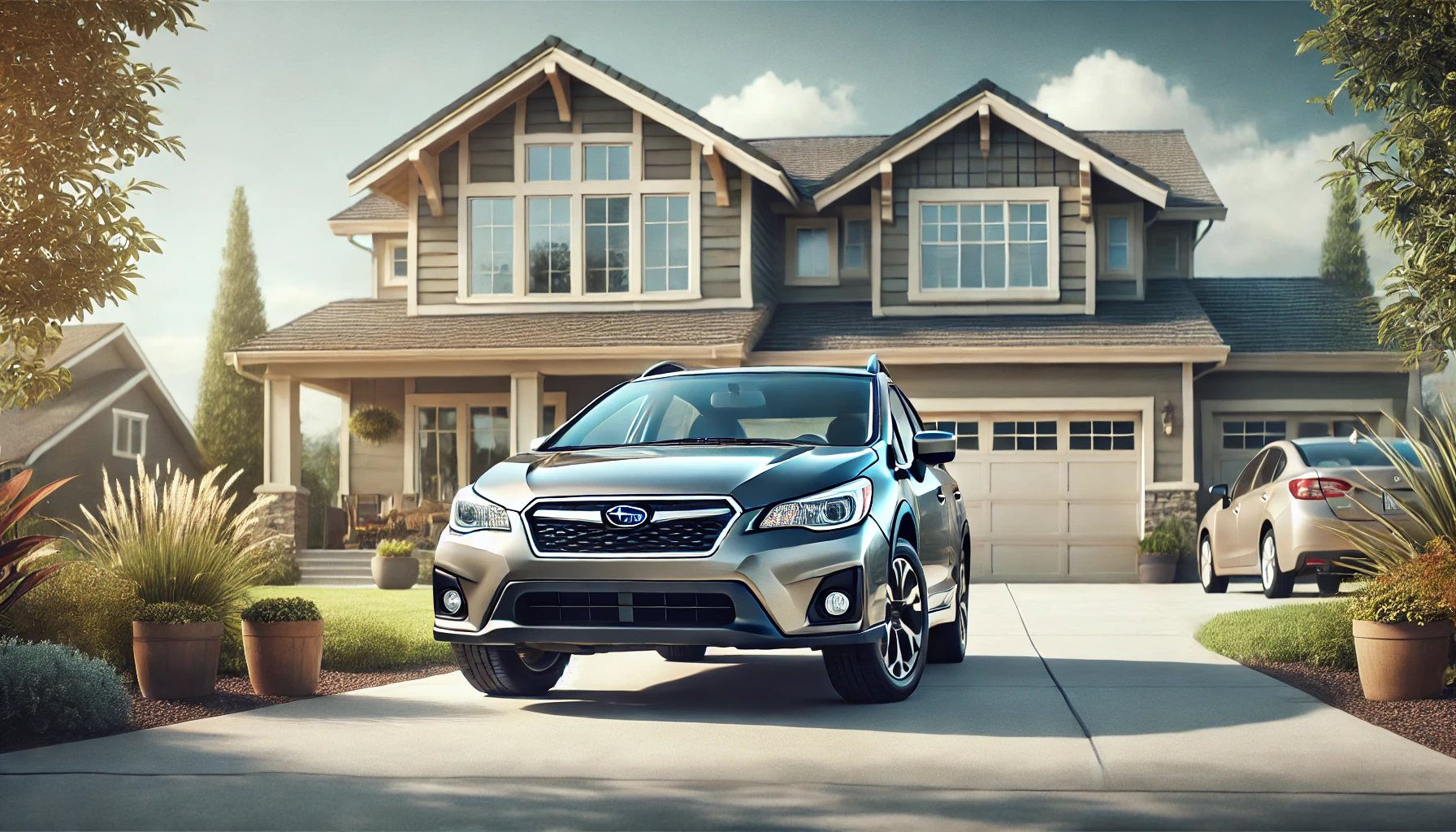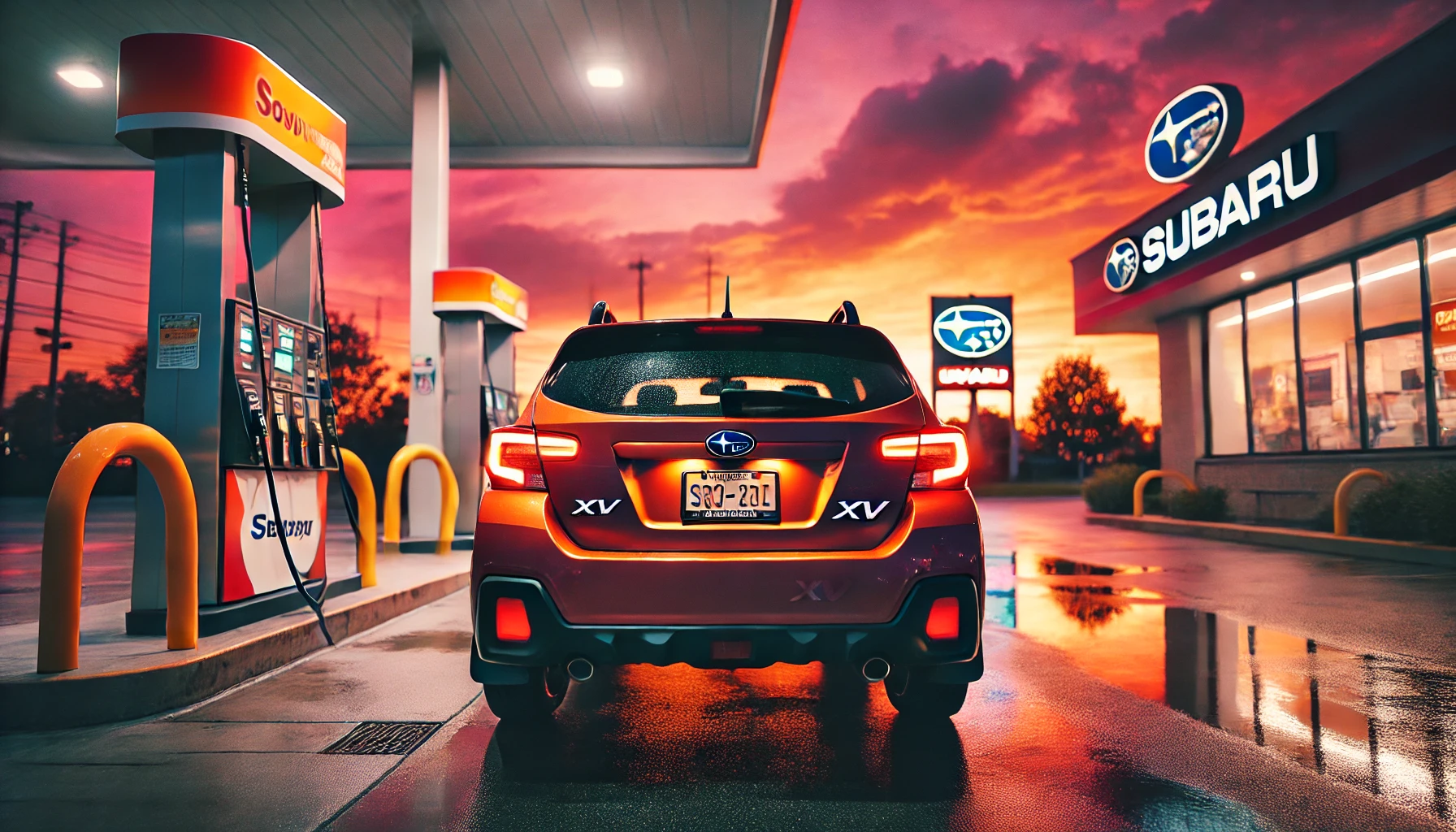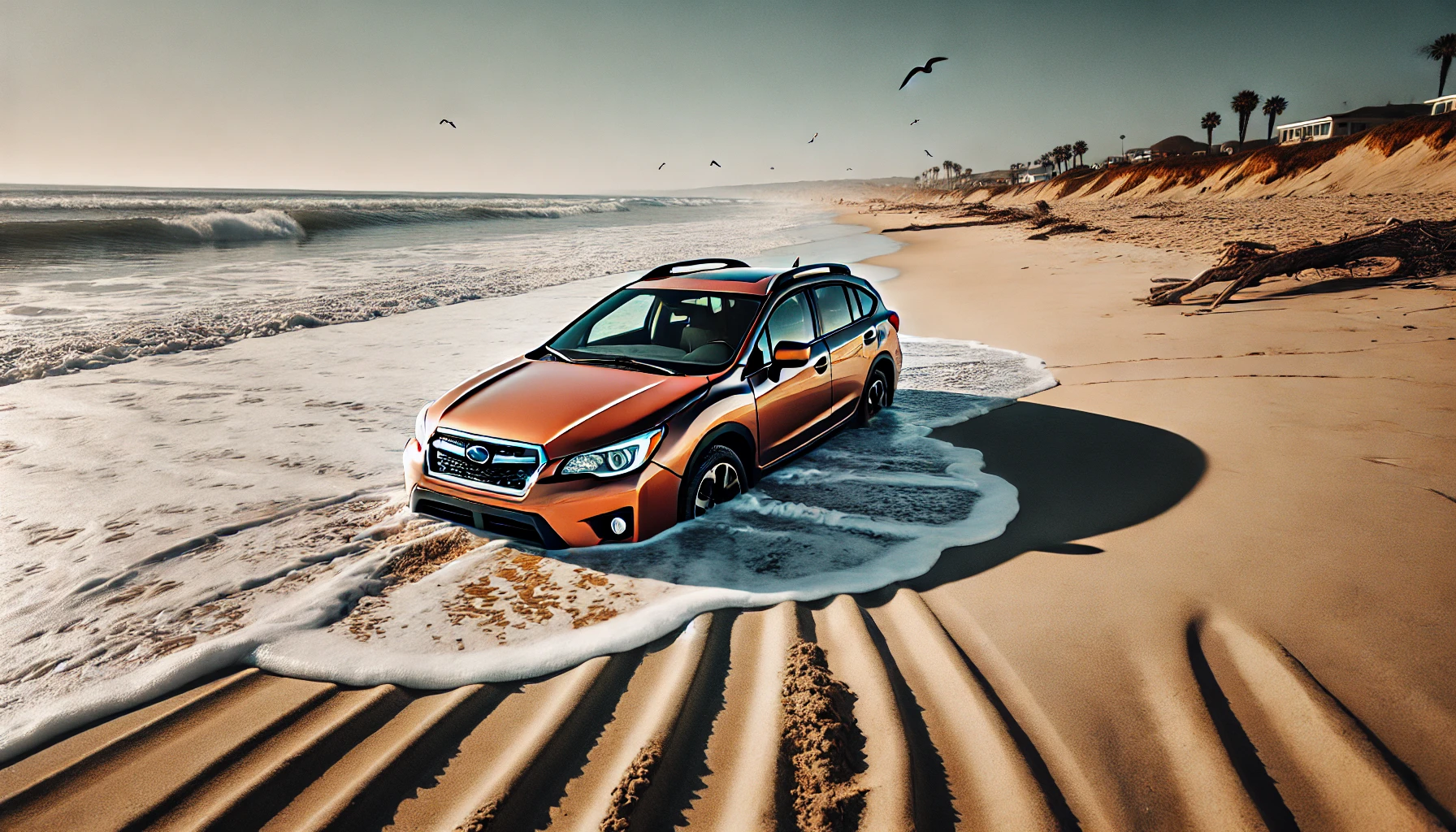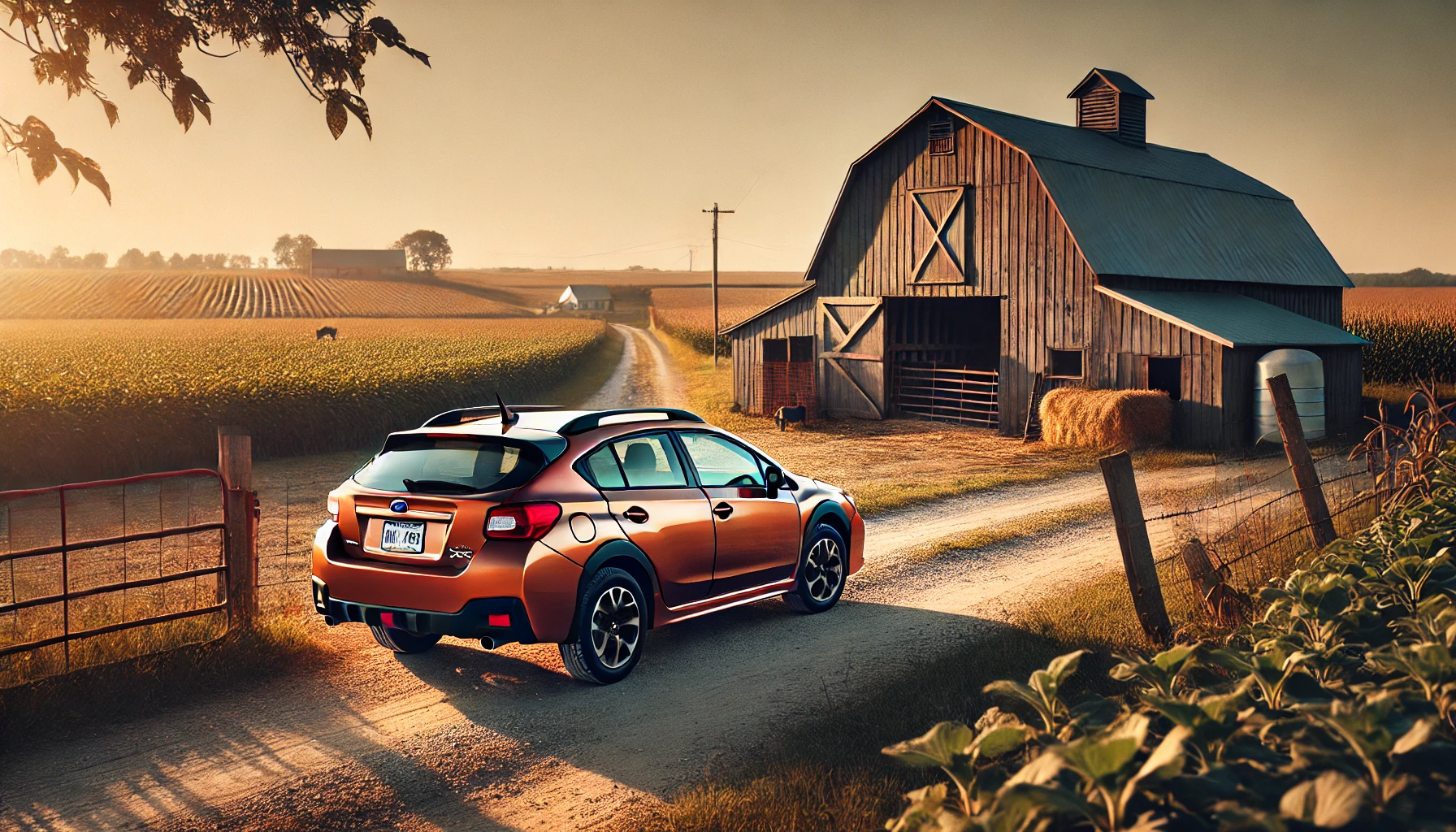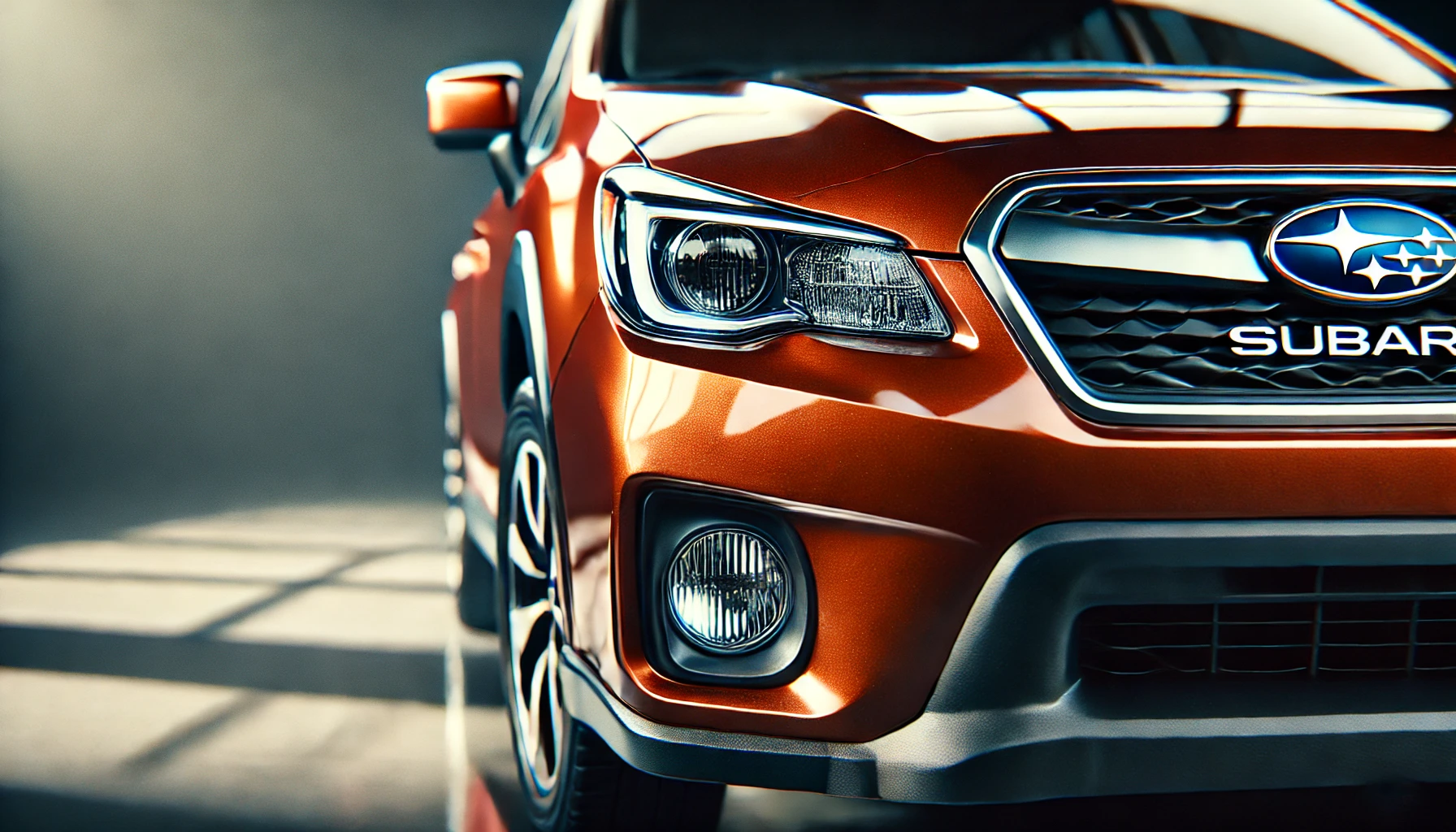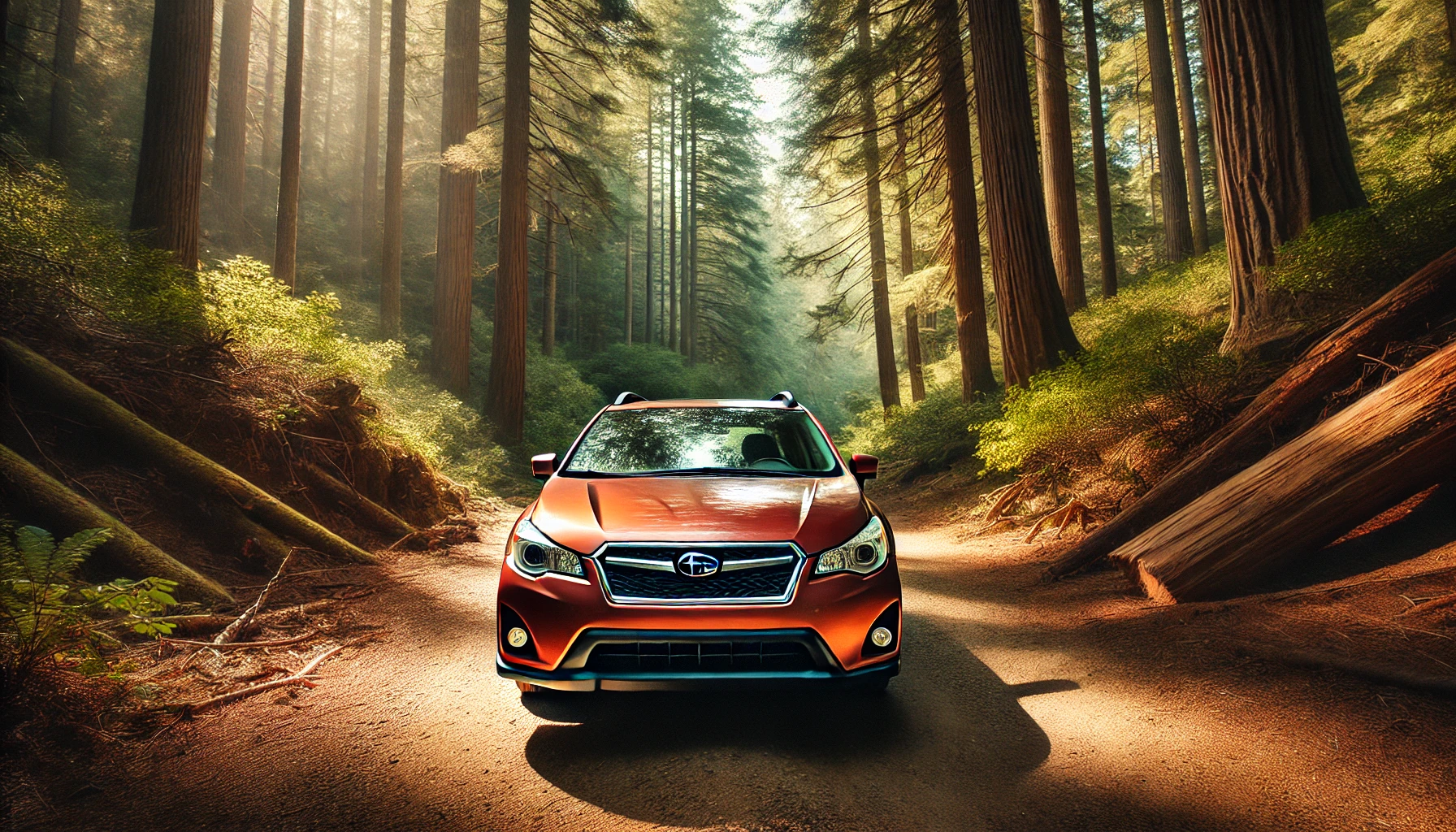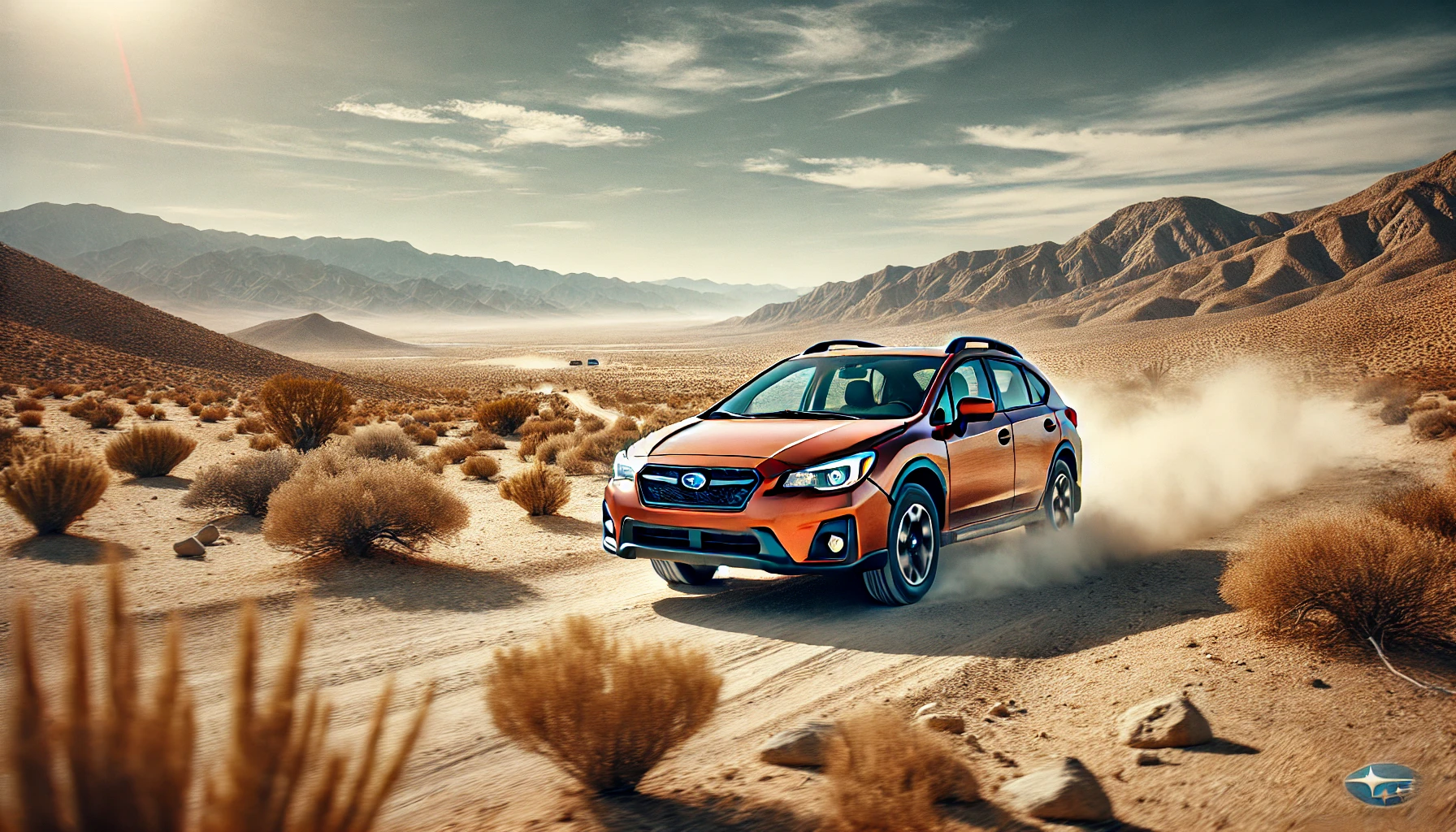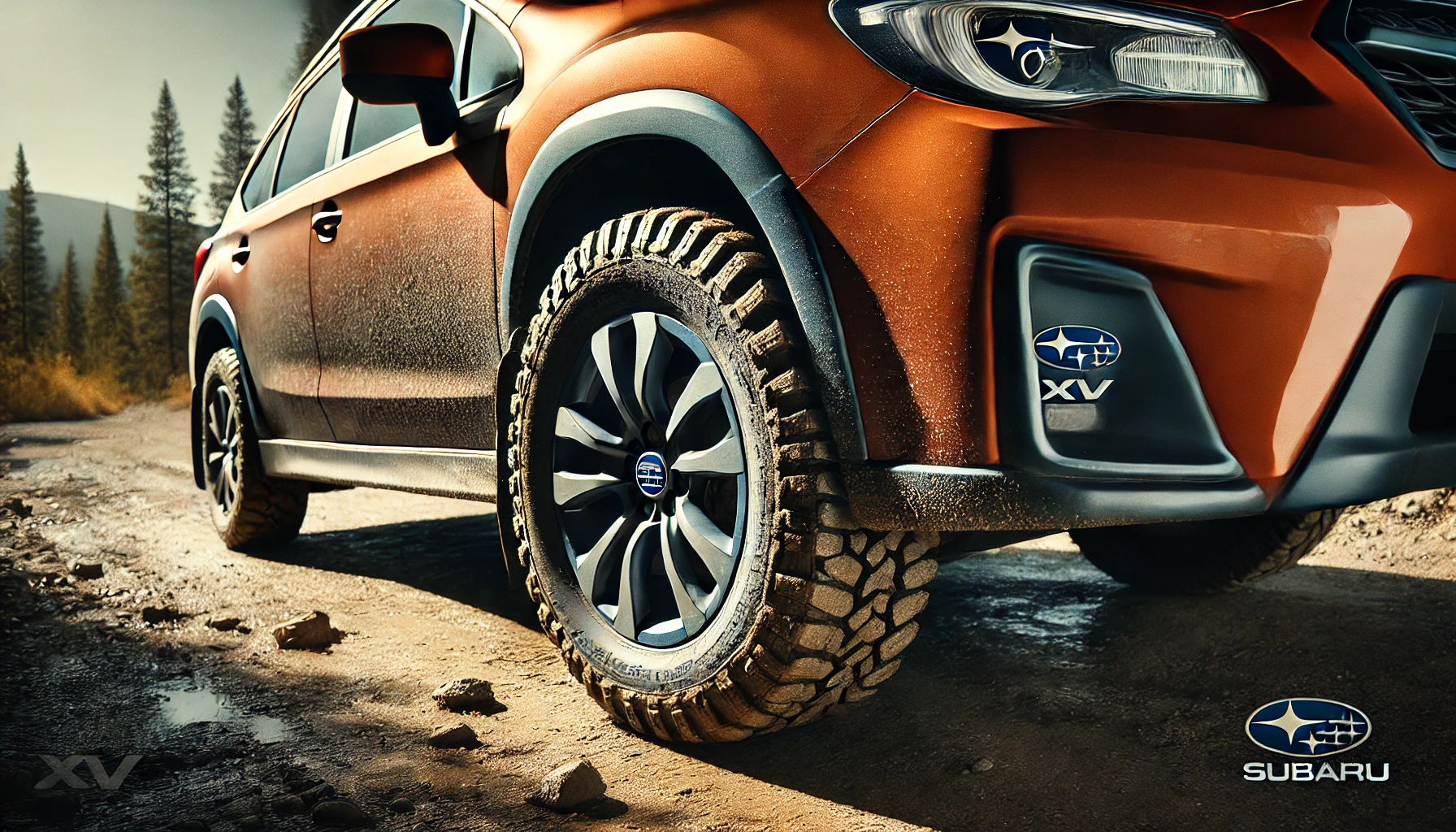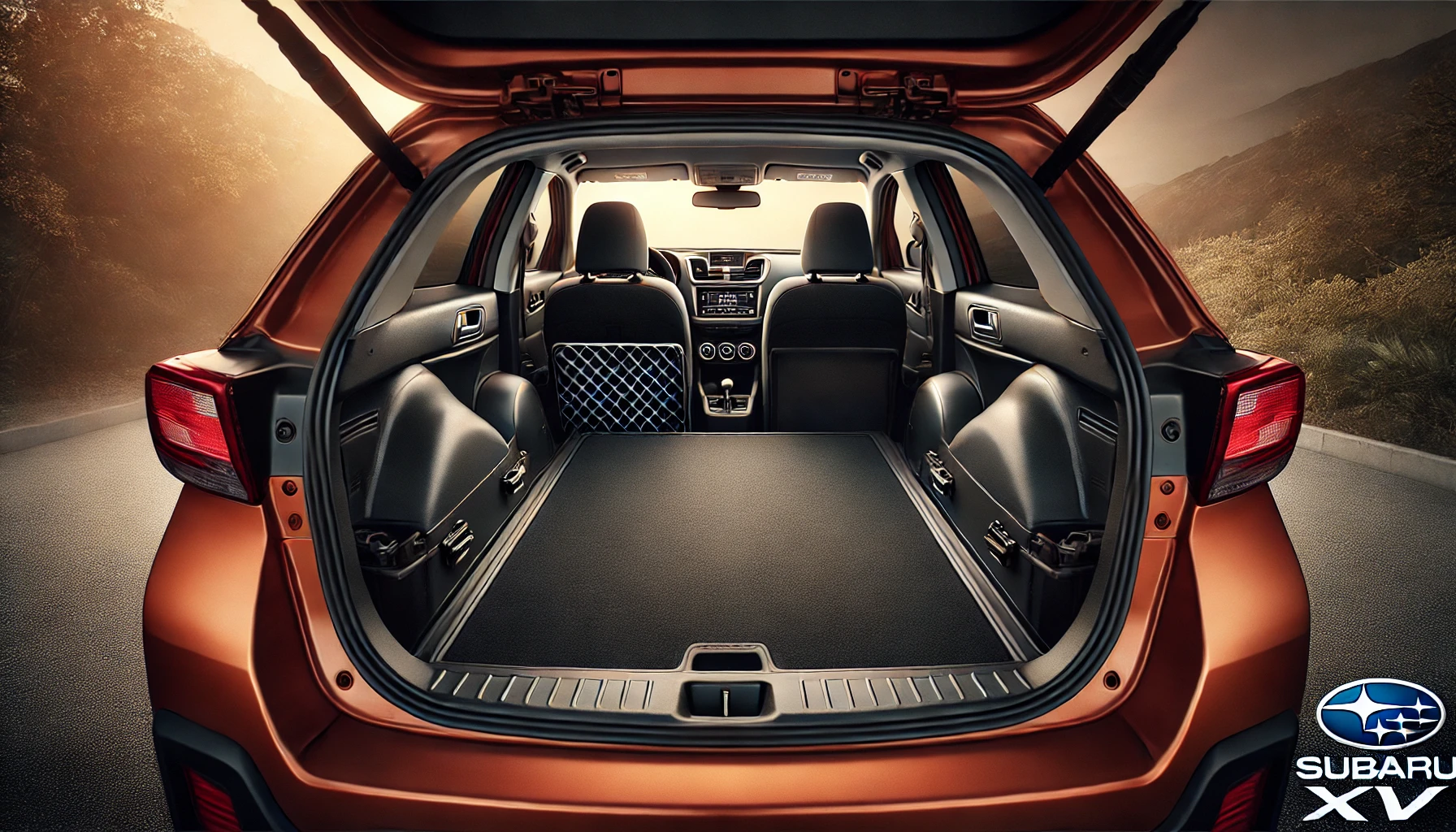The Subaru XV, which debuted in 2012, is a compact crossover that marked Subaru’s entry into the growing segment of small, versatile SUVs. While the XV model itself had various engine options globally, including the innovative e-Boxer hybrid powertrain technology, the 1.6-liter variant was particularly notable in certain markets where efficiency and affordability were prioritized over outright performance.
The introduction of the new e-Boxer engine in the Subaru XV enhances performance and fuel efficiency, integrating an electric motor with traditional gasoline engines to improve the overall driving experience.
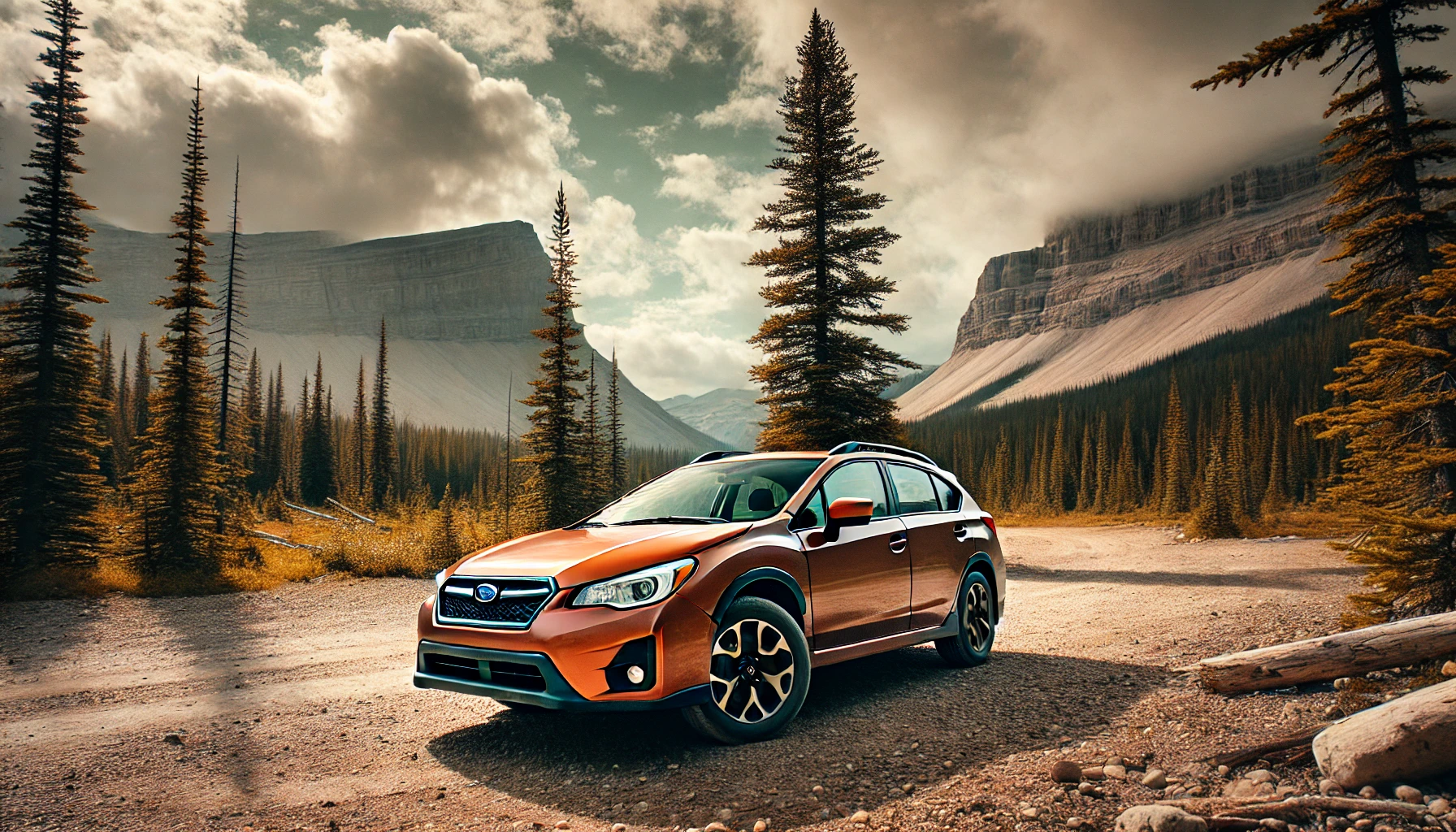
### Origins and Development
The Subaru XV has its roots in the Subaru Impreza, a compact car that has been in production since 1992. The XV was first introduced in 2012 as a crossover SUV extension of the Impreza, with the aim of providing a more rugged and off-road-capable vehicle. Since then, the XV has undergone two major updates, with the latest generation being introduced in 2022. Throughout its development, the XV has retained its signature Symmetrical All-Wheel Drive system, which provides improved traction and control on various road surfaces.
### Overview of the Subaru XV
The Subaru XV is a compact SUV that is designed to provide a balance of on-road comfort and off-road capability. It features a spacious interior, with ample legroom and headroom for passengers, as well as a generous cargo area. The XV is available with a range of petrol engines, including a 1.6-liter and 2.0-liter option, both of which are paired with a Continuously Variable Transmission (CVT). The XV also features a range of advanced safety features, including Adaptive Cruise Control, Lane Keep Assist, and Rear Cross Traffic Alert.
### The 1.6-Liter Engine
The 1.6-liter petrol engine is one of the two engine options available for the Subaru XV. This engine produces 112bhp and 150Nm of torque, making it suitable for city driving and light off-road use. While it may not be the most powerful engine option, the 1.6-liter engine is fuel-efficient and provides a smooth driving experience. However, it may struggle with heavy loads or steep inclines, making it less suitable for those who need a more powerful engine.
### Features and Innovations
The Subaru XV features a range of innovative features, including a high-resolution 11.6-inch infotainment touchscreen, wireless Apple CarPlay and Android Auto, and a range of advanced safety features. The XV also features a Driver Monitoring System, which provides a warning if a driver appears to show signs of fatigue. Additionally, the XV has a generous storage capacity and a wider boot opening, making it practical for daily use.
### Off-Road Capability
The Subaru XV is designed to provide excellent off-road capability, thanks to its Symmetrical All-Wheel Drive system and generous ground clearance of 220mm. The XV also features Hill Descent Control, which helps to control the vehicle’s speed on steep inclines, and X-MODE, which provides improved traction and control on slippery surfaces. Whether you’re driving on muddy fields or snowy roads, the XV is capable of handling challenging terrain with ease.

### Market Performance and Legacy
The Subaru XV has been a successful model for the company, with a loyal following among outdoor enthusiasts and those who value its off-road capability. The XV has also received positive reviews from critics, who praise its spacious interior, advanced safety features, and smooth driving experience. While it may not be the best-selling SUV on the market, the XV has established itself as a reliable and capable choice for those who need a vehicle that can handle both on-road and off-road driving.
### Origins and Development
The Subaru XV, originally presented as the Subaru XV Concept at the 2011 Shanghai Auto Show, was developed from the Impreza platform. This was a strategic move by Subaru to capitalize on the increasing consumer demand for compact crossovers that offer the practicality of an SUV while maintaining the dynamics and efficiency closer to that of a traditional car.
The XV was designed with Subaru’s core values in mind: reliability, off-road capability, and safety. It featured Subaru’s Symmetrical All-Wheel Drive system as standard, a hallmark of the brand that provided better traction and stability on various surfaces. The model inherited the boxy but functional styling cues from Subaru’s lineup, with rugged cladding and a slightly raised suspension to enhance its off-road appearance and capability.
### The 1.6-Liter Engine
The 1.6-liter engine variant was a direct response to market demands for a more fuel-efficient crossover without compromising on the versatility SUVs are known for. This engine, a naturally aspirated flat-four Boxer engine, produced modest power output but was tuned to offer a balance between performance and efficiency. It was paired with a Lineartronic CVT (Continuously Variable Transmission) and an electric motor, which aimed to maximize fuel economy and provide smooth acceleration.
Electric power enhances vehicle performance and efficiency by enabling various driving modes that leverage electric power for short distances or assist the gasoline engine.
### Features and Innovations: Symmetrical All Wheel Drive
Despite being an entry-level engine option, the 2012 Subaru XV 1.6 was equipped with a range of features aimed at enhancing the driving experience and comfort. These included a high driving position, good ground clearance, and Subaru’s EyeSight safety technology as an available option in later models. EyeSight, when equipped, provided features like adaptive cruise control, pre-collision braking, and lane departure warning, setting a benchmark for safety in the segment.
The interior was designed with practicality in mind, offering ample cargo space and a range of storage options. The seats were comfortable with durable upholstery suitable for active lifestyles, characteristic of Subaru’s focus on vehicles built for adventure.
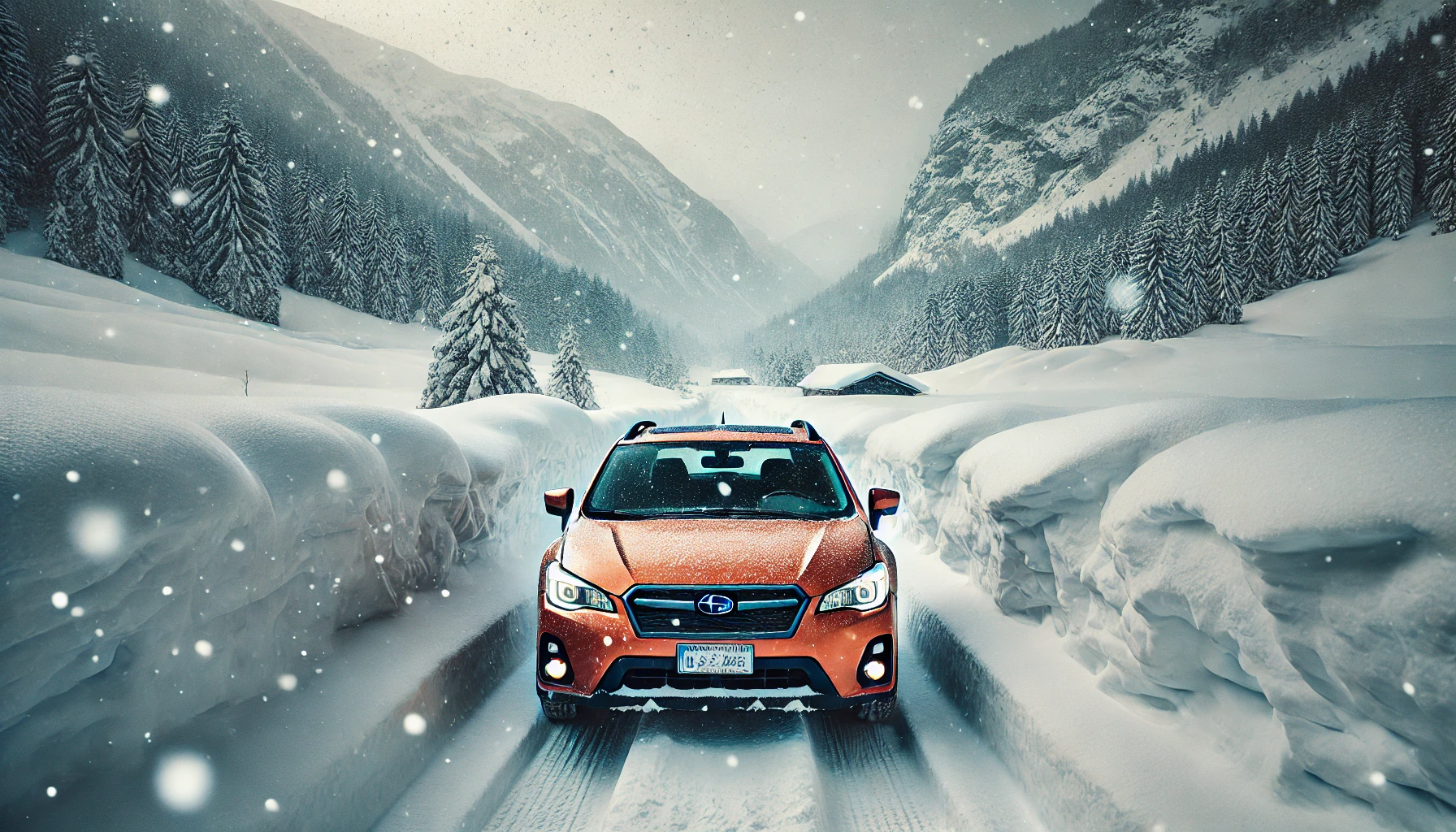
### Market Performance and Legacy
The Subaru XV 1.6 was well-received in markets where smaller engine displacements were favored either due to tax regulations or fuel cost considerations. It was particularly appealing to urban dwellers who desired a vehicle that could confidently handle both city streets and occasional off-road excursions.
Overall, the 2012 XV helped solidify Subaru’s presence in the global crossover market, expanding its appeal beyond traditional Subaru enthusiasts to a wider audience looking for practicality, reliability, and off-road capability. The model laid a strong foundation for subsequent iterations of the XV (later branded as the Crosstrek in some markets), which continued to evolve with more powerful engines, hybrid options, and enhanced technology features.
The success of the 2012 Subaru XV 1.6 demonstrated the brand’s ability to adapt and innovate within a competitive automotive landscape, further establishing Subaru as a key player in the crossover segment. It proved to be a good car for those seeking a reliable and versatile option, especially in challenging environments.
“The 2012 Subaru XV, also known as the Subaru Crosstrek in some markets, was designed by Osamu Namba. The vehicle’s design was heavily inspired by the brand’s need to capture a more youthful and adventurous audience, combining ruggedness with urban sophistication. The inspiration came from the idea of creating a versatile crossover that could handle both city streets and rougher terrains, appealing to active lifestyles.
The design language used for the 2012 Subaru XV was Subaru’s “”Dynamic & Solid”” approach. This language focused on creating vehicles that convey a sense of robustness and dynamism, which are traits associated with Subaru’s all-wheel-drive heritage. The Subaru XV features distinctive elements such as the hexagonal grille, hawk-eye headlights, and a pronounced wheel arch design, all contributing to a sporty and robust appearance.”
“The 2012 Subaru XV 1.6, known for its practicality and rugged appeal, offers an interior that reflects its utilitarian nature. The quality of the interior is generally considered decent, especially for a vehicle in its class and price range, though it may not be as luxurious as some of its competitors.
Materials used in the interior of the 2012 Subaru XV 1.6 mainly include durable plastics, which are designed to withstand wear and tear from active use. The dashboard and door panels often feature a combination of hard plastics with some soft-touch surfaces in key areas to enhance comfort. The seats are typically upholstered in fabric, which is selected for its resilience and ease of maintenance, although higher trims might offer leather upholstery as an optional upgrade.
The overall design is straightforward and practical, with a focus on functionality rather than opulence. Ergonomics are generally well-received, with controls that are easy to reach and operate. The interior space is well-utilized, providing adequate room for passengers and cargo, which is a hallmark of Subaru’s design philosophy.
In summary, while the 2012 Subaru XV 1.6 doesn’t boast a luxurious interior, it offers a practical, durable, and comfortable cabin that aligns well with the vehicle’s adventurous and versatile character.”
“The 2012 Subaru XV 1.6, a compact crossover SUV, was designed with safety in mind, featuring several key safety elements that were standard or available at the time. Some of the notable safety features included:
1. Airbags:
The vehicle was equipped with multiple airbags, including front, side, and curtain airbags, to provide protection for occupants in the event of a collision.
The Subaru XV’s X-Mode system offers impressive off-road capabilities, providing a level of confidence similar to that of Land Rover vehicles, especially when navigating challenging terrains such as snow or muddy tracks.
2. Anti-lock Braking System (ABS):
The ABS helped maintain steering control during emergency braking by preventing the wheels from locking up.
3. Electronic Brake-force Distribution (EBD):
This system worked in conjunction with ABS to optimize brake force between the front and rear wheels.
4. Vehicle Dynamics Control (VDC):
VDC included electronic stability control and traction control systems to help maintain vehicle stability in various driving conditions.
5. Brake Assist:
Brake assist technology helped in providing maximum braking power during emergency stops.
6. **Hill Start Assist and Hill Descent Control**:
This feature prevented the vehicle from rolling backward on steep inclines by temporarily holding the brakes as the driver moved from the brake to the accelerator.
Regarding safety ratings, the 2012 Subaru XV (known as the Subaru Crosstrek in some markets) generally performed well in safety tests conducted by various organizations:
– Euro NCAP:
The Subaru XV achieved a 5-star safety rating from Euro NCAP, which is one of the highest ratings given. The vehicle performed well across categories, including adult occupant protection, child occupant protection, pedestrian protection, and safety assistance technologies.
– IIHS:
In markets like the United States, where the vehicle was introduced as the Subaru Crosstrek, the XV received favorable ratings from the Insurance Institute for Highway Safety (IIHS) in most of its crashworthiness tests.
It’s important to check the specific ratings and features for the region where the vehicle is sold, as specifications and safety feature availability can vary by market.”
The 2012 Subaru XV 1.6 is known for its practicality and decent fuel efficiency for a compact crossover. The average fuel consumption for the 1.6-liter engine variant typically falls around 6.5 to 7.5 liters per 100 kilometers (approximately 36 to 39 miles per gallon) under mixed driving conditions. However, actual fuel consumption can vary depending on factors such as driving style, road conditions, and vehicle maintenance. It’s always a good idea to consult the owner’s manual or specific tests for precise figures related to your driving circumstances.
The 2012 Subaru XV 1.6 was equipped with a 1.6-liter naturally aspirated four-cylinder engine, known as the FB16. This engine is part of Subaru’s FB series, which was designed to offer improved fuel efficiency and reduced emissions compared to its predecessors. The FB16 engine in the XV 1.6 produced around 114 horsepower and was paired with either a 5-speed manual transmission or a Lineartronic CVT (Continuously Variable Transmission), providing a balance between performance and efficiency. Additionally, as with most Subaru models, the XV featured the brand’s signature Symmetrical All-Wheel Drive system, offering enhanced traction and stability.
The 2012 Subaru XV 1.6 was equipped with two types of transmissions. It offered a 5-speed manual transmission for enthusiasts who preferred a more engaged driving experience and greater control over gear changes. Additionally, there was a Lineartronic CVT (Continuously Variable Transmission) option, which provided a smoother driving experience with improved fuel efficiency. The CVT was particularly designed to enhance urban and highway driving comfort. Both transmission options complemented the XV’s rugged styling and Subaru’s renowned Symmetrical All-Wheel Drive system.
The 2012 Subaru XV 1.6 is equipped with a brake system that includes ventilated disc brakes at the front and solid disc brakes at the rear. This setup provides effective stopping power and heat dissipation, which is important for maintaining performance during repeated or prolonged braking. The combination of ventilated and solid discs is a common configuration for vehicles in this category, balancing performance and cost-effectiveness.
“The 2012 Subaru XV 1.6, which is part of the first-generation Subaru XV lineup, featured a suspension setup designed to enhance its all-terrain capabilities while maintaining comfort for on-road driving.
In the front, it employed a MacPherson strut suspension system. This is a common choice for many vehicles because it provides a good balance between performance and cost-effectiveness, offering adequate ride comfort and handling characteristics.
At the rear, the XV 1.6 used a double wishbone suspension system. This setup is beneficial for off-road conditions and helps to ensure that the wheels have maximum contact with the road or terrain, improving stability and traction.
Together, these suspension systems were intended to support the vehicle’s symmetrical all-wheel-drive system, giving the Subaru XV 1.6 its renowned capability in various driving conditions.”
Common Problems
“The 2012 Subaru XV 1.6, also known as the Subaru XV Crosstrek in some markets, represents the brand’s attempt at entering the growing compact crossover segment. While it boasts attributes such as a capable all-wheel-drive system and commendable ground clearance, there are several weaknesses and common issues that potential buyers or current owners should be aware of:
1. Engine Performance:
The 2012 XV 1.6 is equipped with a 1.6-liter engine, which many found underpowered, especially when the vehicle is fully loaded with passengers or cargo. Subaru XV cars offer a variety of engine options, but this particular model delivers modest power output that’s often deemed insufficient for spirited driving or quick acceleration, making highway merges and overtakes challenging.
For those considering different models, purchasing a used Subaru XV can be a great option. The Mk1 (2012-2018) and Mk2 (2017-date) models are available with various features and pricing, providing excellent value compared to new models.
2. Fuel Efficiency:
Although the 1.6-liter engine is small, its fuel consumption is not as efficient compared to competitors with similar or even larger engines. This is partly due to the permanent all-wheel-drive system, which, while beneficial for traction, adds weight and mechanical drag.
3. Transmission:
The CVT (Continuously Variable Transmission) employed in this model is sometimes criticized for causing a “”rubber band”” effect, where the engine revs climb without a proportional increase in vehicle speed. This can lead to a disconnected feeling between throttle input and vehicle response. There have also been reports of reliability issues with the CVT, though this varies by individual vehicles.
4. Interior Quality:
The interior of the XV 1.6 is functional but uses a lot of hard plastics, which can detract from the overall quality feel. Compared to competitors, the cabin may feel less refined and more utilitarian, which might not appeal to buyers looking for a more premium experience.
5. **Infotainment System and Adaptive Cruise Control:**
For a 2012 model, the infotainment system in the XV 1.6 was considered basic even at the time of its release. It lacks modern connectivity features such as smartphone integration via Apple CarPlay or Android Auto, which have become standard in newer vehicles.
6. Noise and Vibration:
Road and engine noise can be intrusive, particularly at highway speeds. The vehicle’s level of sound insulation does not compare well against some more refined competitors, which might affect long-distance comfort.
7. Limited Legroom:
While the XV benefits from added ground clearance, which aids in off-road capabilities, the rear seating area suffers from limited legroom. This can be uncomfortable for taller passengers on longer trips.
8. Suspension and Ride Comfort:
The suspension is tuned more for handling than comfort, which can result in a harsher ride over rough roads. This can be off-putting to drivers and passengers who prioritize a smooth ride over sporty handling.
9. Resale Value:
While Subaru vehicles generally hold their value well, the XV 1.6’s less popular engine size and power characteristics might result in a less robust resale value compared to other Subaru models with more potent engine options.
Overall, while the 2012 Subaru XV 1.6 has its strengths in off-road capability and all-weather traction, these weaknesses should be carefully considered by prospective buyers. For those prioritizing power, interior quality, or technological features, it may be worthwhile to explore newer models or alternative vehicles within the segment.”
| Feature/Specification | 2012 Subaru XV 1.6i | 2012 Subaru XV 1.6i-L | 2012 Subaru XV 1.6i-S |
|————————–|———————|———————–|———————–|
| Engine | 1.6L Boxer-4 DOHC | 1.6L Boxer-4 DOHC | 1.6L Boxer-4 DOHC |
| Engine Displacement | 1,600 cc | 1,600 cc | 1,600 cc |
| Power Output | 114 hp @ 5,600 rpm | 114 hp @ 5,600 rpm | 114 hp @ 5,600 rpm |
| Torque | 150 Nm @ 4,000 rpm | 150 Nm @ 4,000 rpm | 150 Nm @ 4,000 rpm |
| Transmission | 5-speed manual / CVT| 5-speed manual / CVT | CVT |
| Drive Type | AWD | AWD | AWD |
| Curb Weight | 1,320 kg (manual) / 1,350 kg (CVT) | 1,320 kg (manual) / 1,350 kg (CVT) | 1,350 kg (CVT) |
| Trunk Volume | 310 liters (seats up) | 310 liters (seats up)| 310 liters (seats up) |
| Fuel Consumption | 6.5 L/100 km (manual) / 6.3 L/100 km (CVT) | 6.5 L/100 km (manual) / 6.3 L/100 km (CVT) | 6.3 L/100 km (CVT) |
| Fuel Type | Unleaded Petrol | Unleaded Petrol | Unleaded Petrol |
| Fuel Tank Capacity | 60 liters | 60 liters | 60 liters |
| Dimensions (L x W x H) | 4,450 mm x 1,780 mm x 1,570 mm | 4,450 mm x 1,780 mm x 1,570 mm | 4,450 mm x 1,780 mm x 1,570 mm |
| Wheelbase | 2,635 mm | 2,635 mm | 2,635 mm |
| Ground Clearance | 220 mm | 220 mm | 220 mm |
| Standard Features | Cloth upholstery, Manual A/C, Basic audio system | Same as 1.6i with additional features | Same as 1.6i-L with premium features |
| Additional Features | – | Cruise Control, Enhanced audio system | Leather seats, Sunroof, Keyless entry |
These specifications can vary slightly depending on the market and specific model year details. The XV 1.6 is renowned for its boxer engine, robust AWD system, and practicality as a compact crossover, offering sufficient cargo space and fuel efficiency for urban and light off-road use.”
FAQ: 2012 Subaru XV 1.6
You are currently viewing a placeholder content from YouTube. To access the actual content, click the button below. Please note that doing so will share data with third-party providers.
More Information
